Aloe Vera Plant
- October 31, 2023
- 1 comment
Aloe vera, a popular succulent plant known for its remarkable healing properties, has been cherished for centuries for its versatile applications. This hardy and attractive plant, native to arid regions, is characterized by its thick, fleshy leaves that store a gel-like substance filled with numerous bioactive compounds.
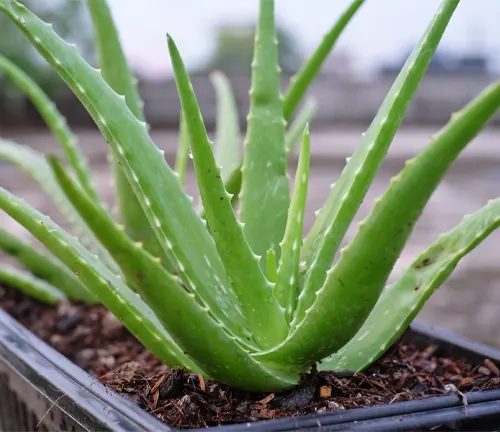
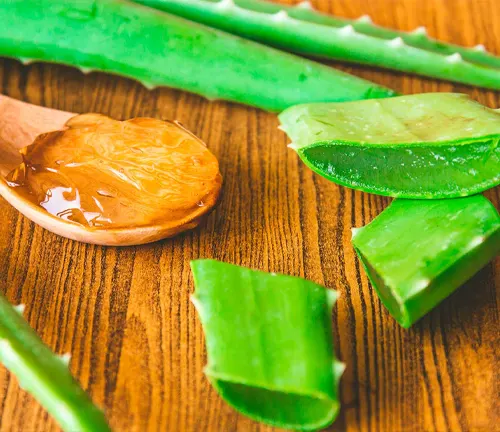
Aloe vera has gained worldwide recognition for its medicinal and cosmetic benefits. Its gel is widely used to soothe and heal skin ailments, including burns, sunburns, and minor cuts, due to its anti-inflammatory and moisturizing properties. In addition to its topical applications, aloe vera is also consumed in various forms, such as aloe vera juice or supplements, to promote digestive health and boost the immune system.
This remarkable plant’s adaptability and natural healing properties make it a popular and indispensable addition to many households and skincare routines, further emphasizing its significance in the world of natural remedies and wellness.
| Characteristics | Description |
| Scientific Name | Aloe barbadensis miller |
| Family | Asphodelaceae |
| Type | Succulent |
| Origin | Arid regions of Africa |
| Size | Typically 12 to 24 inches (30 to 60 cm) in height |
| Leaves | Thick, fleshy, and lance-shaped with serrated edges |
| Leaf Color | Grayish-green to bright green |
| Gel Color | Clear and viscous |
| Flowers | Tubular, bell-shaped, orange or yellow, on tall spikes |
| Growing Conditions | Well-draining soil, plenty of sunlight |
| Watering | Drought-tolerant, water sparingly |
| Temperature | Thrives in warm, dry climates |
| Propagation | Offsets (pups) or seeds |
| Common Uses | Medicinal, skincare, cosmetics, and culinary (aloe vera juice) |
| Notable Properties | Anti-inflammatory, moisturizing, soothing, and healing |
| Toxicity | Non-toxic to humans but may be toxic to pets if ingested |
Botanical Beauty of “Aloe Vera Plant”
The Aloe Vera plant, scientifically known as Aloe barbadensis miller, is a botanical marvel that has captured the admiration of nature enthusiasts and health-conscious individuals alike. Its distinctive appearance, characterized by a cluster of thick, fleshy leaves, makes it a striking addition to any garden or succulent collection. The plant’s rosette of leaves, often grayish-green to bright green, is punctuated with serrated edges, imparting an elegant and inviting appeal.

Woodland Elegance
Aloe Vera’s woodland elegance is further accentuated by its occasional flowering. The plant produces tubular, bell-shaped flowers in hues of orange or yellow, which gracefully bloom on tall spikes. These delicate blossoms contrast beautifully with the plant’s robust, succulent leaves, adding a touch of natural sophistication to its overall aesthetic.
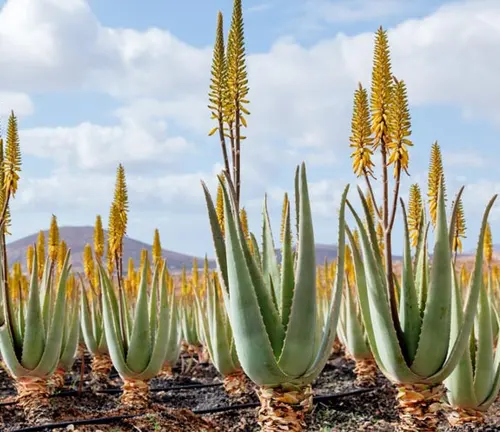
Ecological Importance
Beyond its aesthetic charm, Aloe Vera plays a vital role in the ecosystems where it thrives. Native to arid regions of Africa, this hardy succulent is adapted to survive in challenging environmental conditions. Its water-storing leaves help retain moisture, making it an important resource for wildlife during dry spells. Aloe Vera’s flowers, meanwhile, attract pollinators like bees and birds, contributing to the biodiversity of its native habitats.
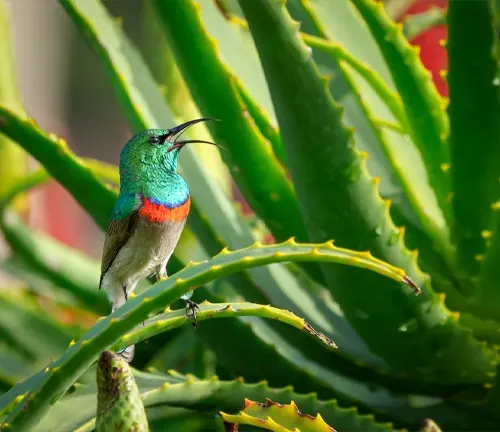
Cultivation and Conservation
Aloe Vera’s popularity has led to its cultivation in many parts of the world. It is relatively easy to grow, requiring well-draining soil and plenty of sunlight. However, it’s crucial to balance cultivation with conservation efforts, as some wild Aloe Vera species are at risk due to overharvesting. Sustainable practices and the protection of natural habitats are essential to ensure the long-term survival of this remarkable plant.
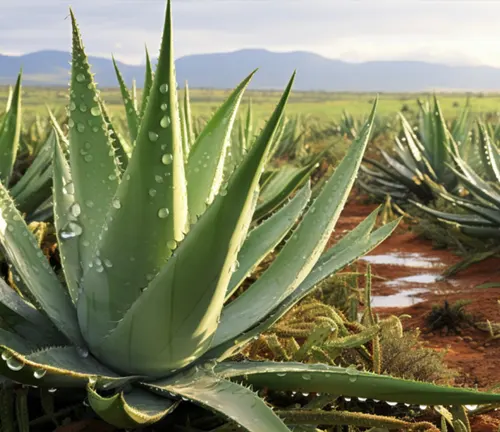
Fragrance
One fascinating aspect of Aloe Vera is its unique fragrance. When the leaves are cut or broken, they release a pleasant, earthy aroma. This fragrance, often described as soothing and fresh, adds to the overall appeal of the plant and enhances the experience of using its gel for various purposes.
Soil Stabilization
Aloe Vera contributes to soil stabilization, particularly in areas prone to erosion. Its extensive root system helps bind soil particles together, preventing soil degradation and loss. This ecological function makes it a valuable asset in regions vulnerable to soil erosion, further underlining its importance in environmental conservation.
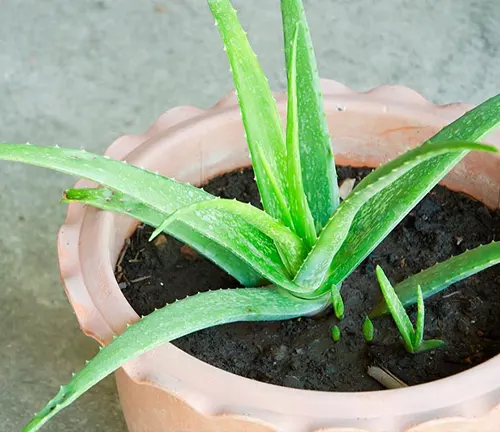
Common Uses
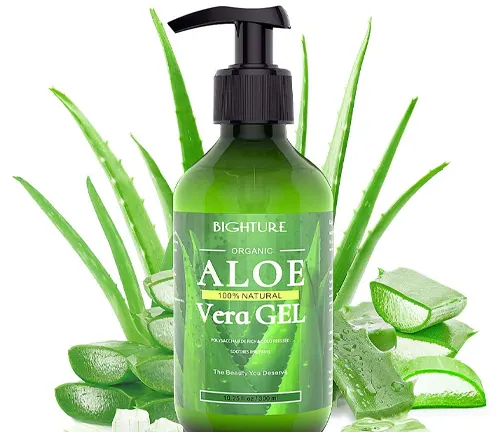

Aloe Vera is renowned for its versatility and a wide range of practical applications. The clear, viscous gel found within its leaves has been used for centuries to soothe and heal various skin conditions. It is a go-to remedy for sunburn relief, wound healing, and moisturizing dry skin. Beyond skincare, Aloe Vera is also incorporated into cosmetics, soaps, and shampoos, harnessing its rejuvenating properties.
Benefits
The Aloe Vera plant is celebrated for its numerous health benefits. Its gel is not only skin-friendly but also consumed in various forms, including Aloe Vera juice. When ingested, it promotes digestive health, supports the immune system, and may aid in weight management. The anti-inflammatory and antioxidant properties of Aloe Vera make it a natural remedy for a broad spectrum of ailments.
Different Species
Aloe Arborescens
Also known as the “Krantz Aloe” or “Candelabra Aloe,” this species is known for its treelike growth, with multiple stems and bright red or orange flowers. It is native to southern Africa.
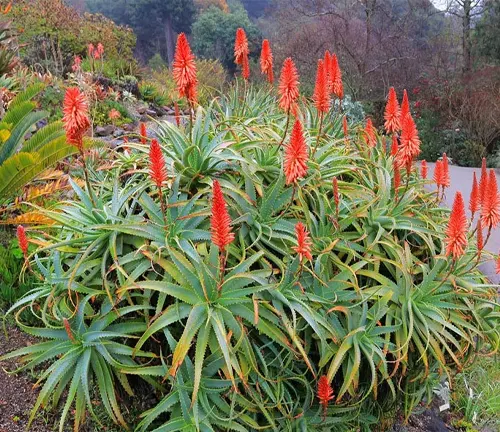
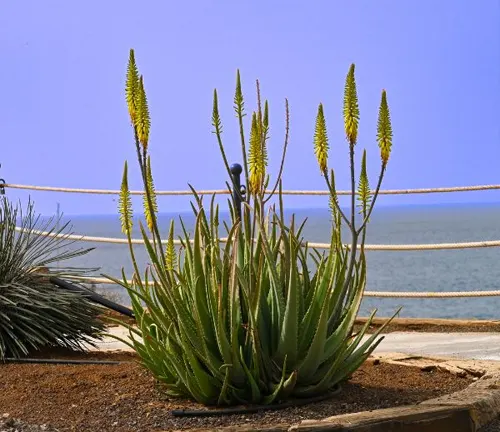
Aloe Vera
(Aloe barbadensis miller)
The most well-known and widely cultivated species, Aloe Vera is appreciated for its medicinal properties and soothing gel.
Aloe Ferox
Commonly called “Cape Aloe,” it is native to South Africa and features tall spikes of red or orange flowers. The bitter sap from its leaves has traditional medicinal uses.
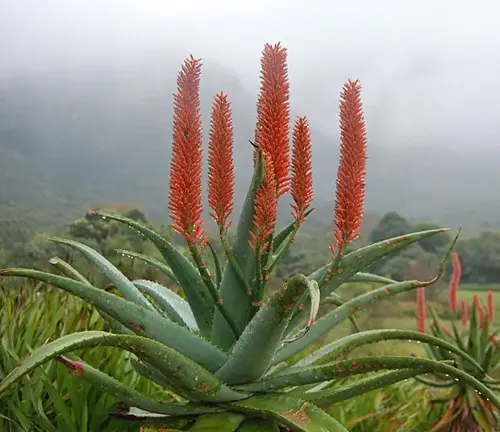
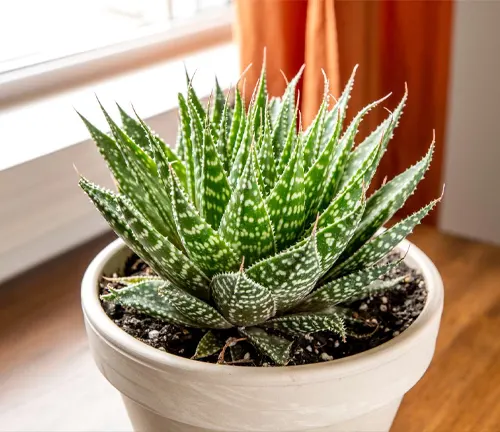
Aloe Aristata
Known as the “Lace Aloe” or “Torch Plant,” this species has dark green, toothed leaves with white spots. It’s native to South Africa and is popular in rock gardens.
Aloe Plicatilis
Often referred to as the “Fan Aloe,” it is native to South Africa and is characterized by its fan-shaped leaves and vibrant orange flowers.

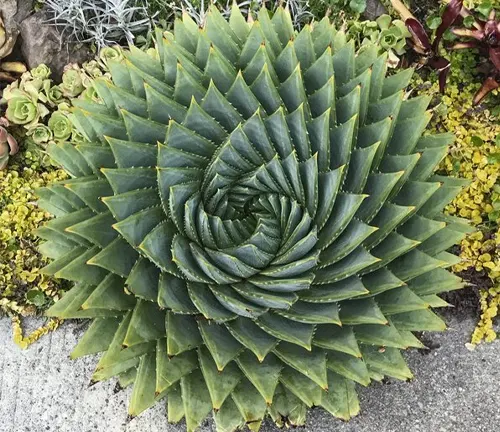
Aloe Polyphylla
This striking species, also called the “Spiral Aloe,” forms a perfect spiral with its leaves. It’s native to Lesotho and is considered an endangered species.
Aloe Vera Variegata
A variegated variety of Aloe Vera, known for its leaves with white or pale yellow stripes. It is primarily grown for ornamental purposes.
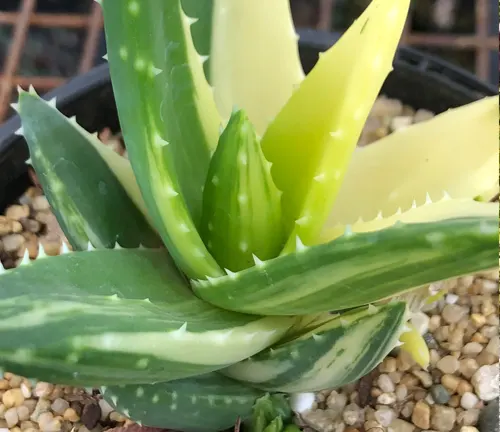
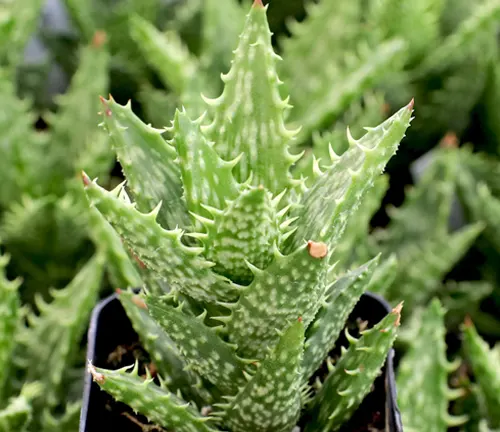
Aloe Juvenna
Commonly known as the “Tiger Tooth Aloe,” it has distinctive dark green leaves with white spots and serrated edges. It’s native to Kenya and Tanzania.
Aloe Dichotoma
Referred to as the “Quiver Tree” or “Kokerboom,” it is native to southern Africa and is known for its unusual tree-like appearance with a tall trunk and succulent leaves.


Aloe Saponaria
Also called the “African Aloe,” this species is known for its soapy sap. It has distinctive rosettes of green leaves and bright red or orange flowers.
Frequently Asked Questions (FAQs)
- What is Aloe Vera?
Aloe Vera is a succulent plant known for its fleshy leaves containing a gel-like substance. It’s popular for its various medicinal and cosmetic uses. - How do I care for my Aloe Vera plant?
Aloe Vera plants thrive in well-draining soil and plenty of sunlight. Water sparingly and avoid overwatering, as they are drought-tolerant. - Can I grow Aloe Vera indoors?
Yes, Aloe Vera can be grown indoors in pots or containers as long as it receives adequate sunlight. - Is Aloe Vera toxic to pets?
While Aloe Vera is not toxic to humans, it can be toxic to pets if ingested. Keep it out of reach of pets. - What are the benefits of Aloe Vera gel for the skin?
Aloe Vera gel is known for its soothing and moisturizing properties, making it effective for treating burns, sunburns, dry skin, and minor cuts. - Can I eat Aloe Vera gel or drink Aloe Vera juice?
Aloe Vera gel is safe for consumption in moderation and is used in Aloe Vera juice. It can promote digestive health and support the immune system. - How can I propagate Aloe Vera?
Aloe Vera can be propagated through offsets (pups) or from seeds. Offsets are the most common method and involve separating and replanting the young shoots. - Are there different species of Aloe Vera?
Aloe Vera is a specific species (Aloe barbadensis miller), but there are numerous other Aloe species, each with its characteristics and uses. - What are the medicinal uses of Aloe Vera?
Aloe Vera has been used for centuries to treat skin conditions, minor burns, wounds, and to alleviate inflammation. It’s also used in various over-the-counter medications and cosmetics. - How can I harvest Aloe Vera gel from the plant?
To harvest the gel, cut a leaf close to the base, then slice it open to extract the gel. Be careful not to damage the inner skin, as it contains laxative compounds. - Can I use Aloe Vera for hair care?
Aloe Vera is often used in hair products for its moisturizing and nourishing properties. It can help with dandruff, scalp health, and hair hydration. - Is Aloe Vera effective for treating sunburn?
Yes, Aloe Vera is widely known for its ability to provide relief and promote healing in cases of sunburn. Its cooling and anti-inflammatory properties can soothe the skin. - What are some common Aloe Vera plant problems and solutions?
Common problems include overwatering, root rot, and pest infestations. Solutions often involve adjusting watering habits, improving soil drainage, or using natural pest control methods.


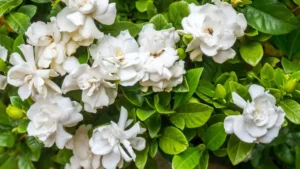
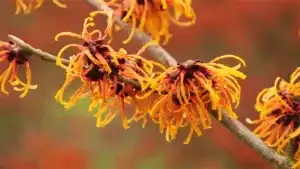
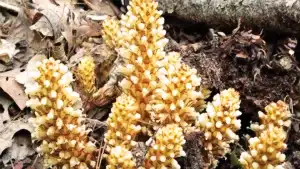




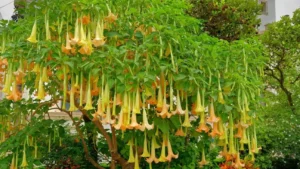
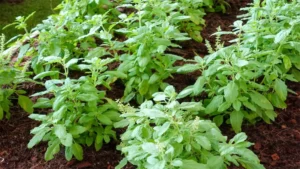



Quite helpful
Innocent
February 27, 2024 4:16 pm